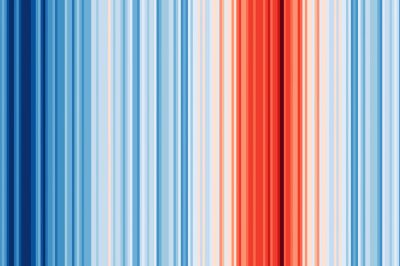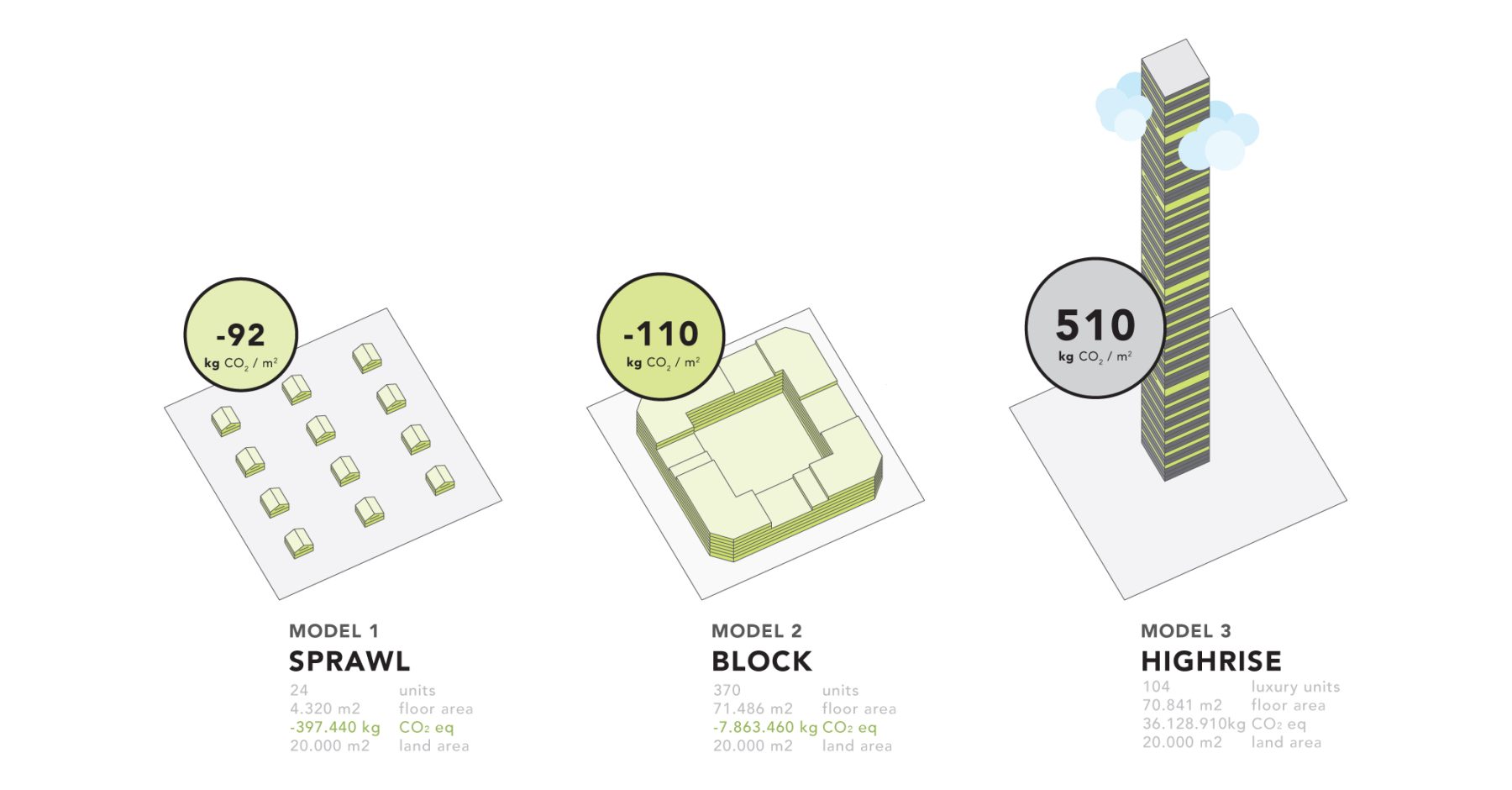
What urban models are most likely to become CO2 negative?
How does a Global Warming Potential calculation translate to different types of buildings? And what urban models are most likely to become CO2 negative=climate positive? In other words: How are we going to live climate positive? To answer this question, we compared three fundamentally different types of built environment and looked at how they relate to the Paris Agreement. According to the Paris Agreement, in 2023, 202 kg CO2 eq / m2 GLA for multi-family houses and 184 kg CO2 eq / m2 GLA for single-family houses may be emitted.
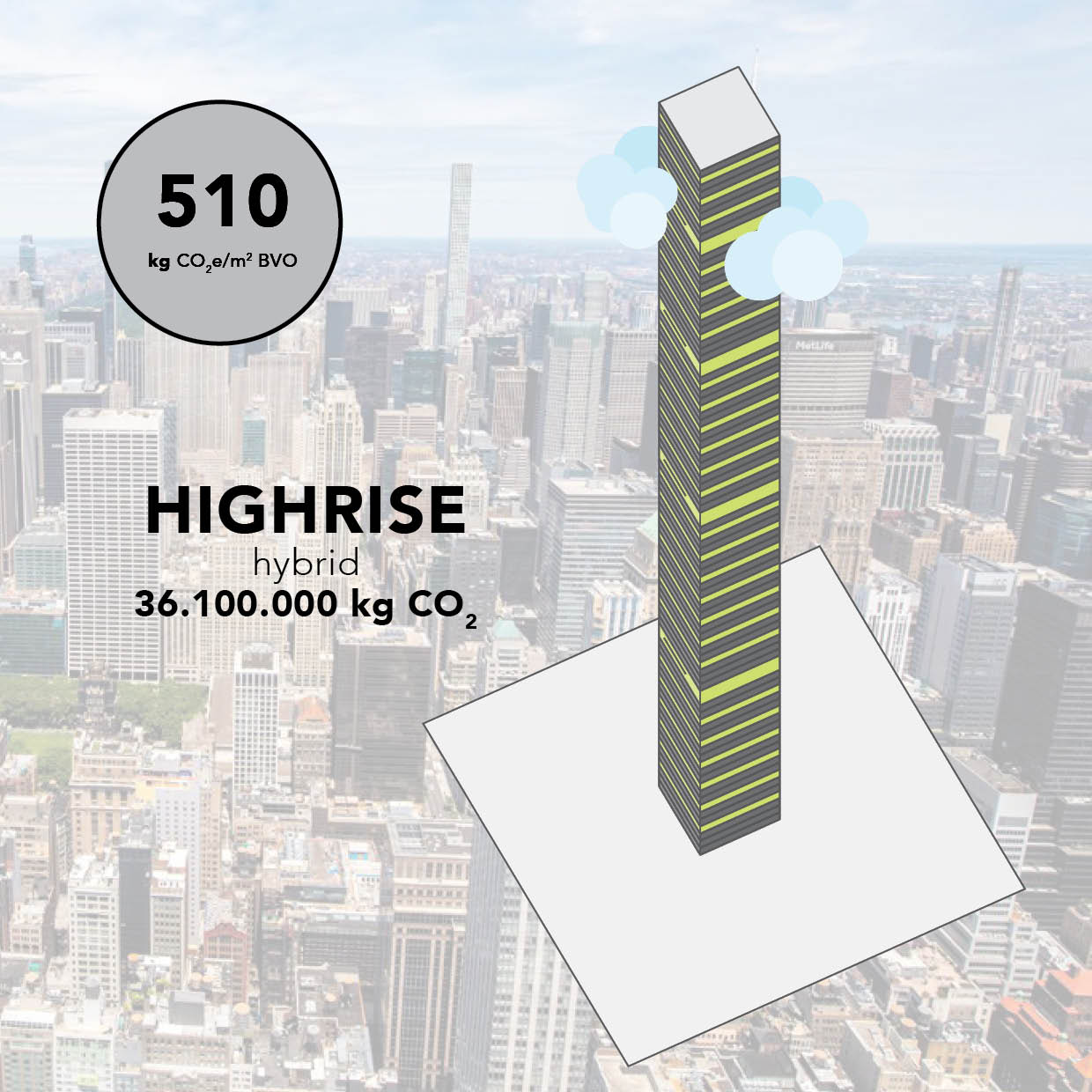
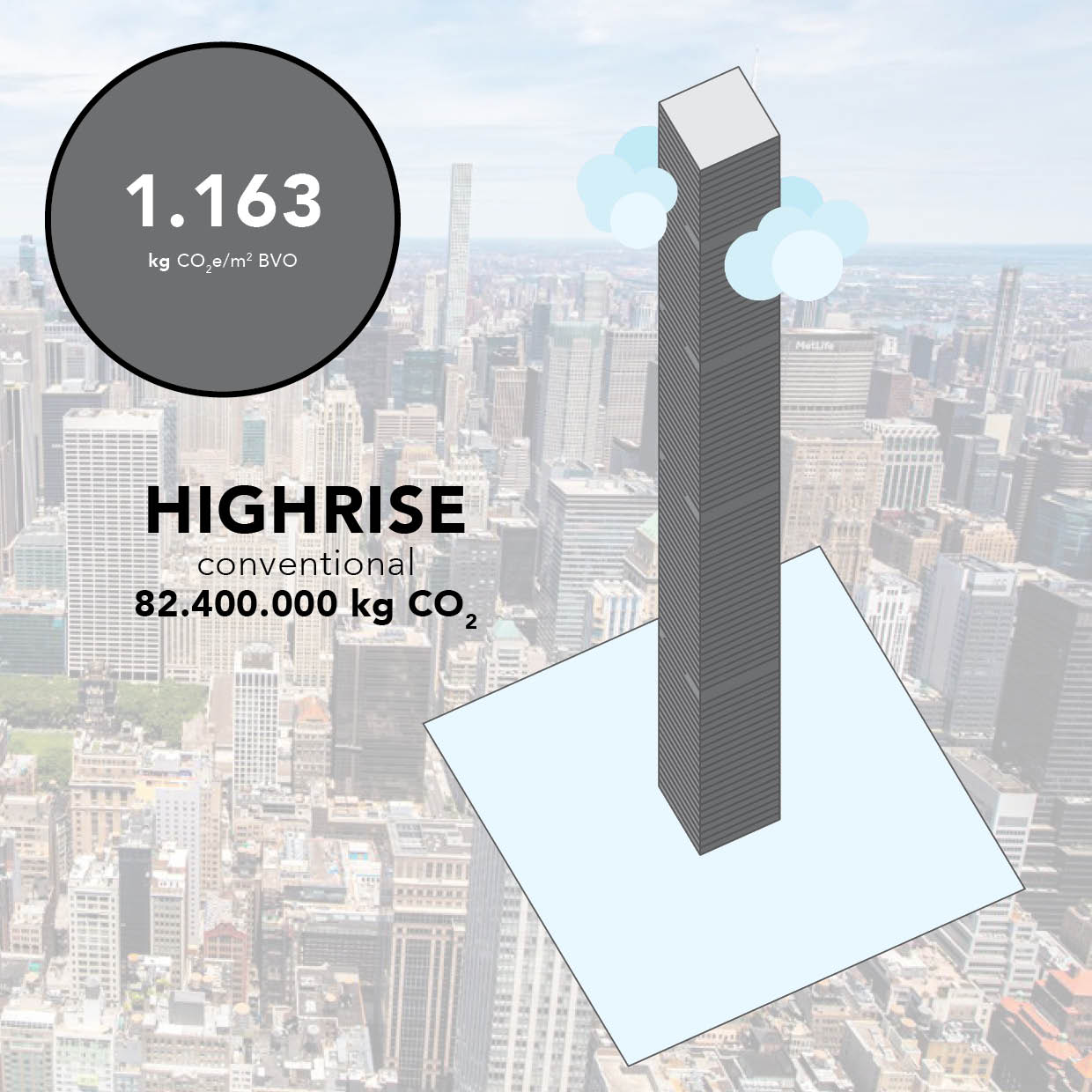
HIGHRISE, extremely high density in metropolitan environment in (super) high-rise buildings such as in New York City
A conventionally built tower emits 1,163 kg CO2 eq / m2 GFA. This exceeds the Paris Agreement almost 6 times! The reason that (super) high-rise buildings emit so much CO2 is that they require a relatively large amount of material per m2 (a lot of façade and a large core), and the production of materials used (concrete, stone, steel, aluminum) emits large amounts of CO2.
Of course, we investigated whether this model could also be done CO2 negative. But unfortunately we had to conclude that, due to the required building strength, the (super)high-rise can (for now) only be partially biobased. A net emission of 510 kg CO2 eq / m2 GFA remains in this case.

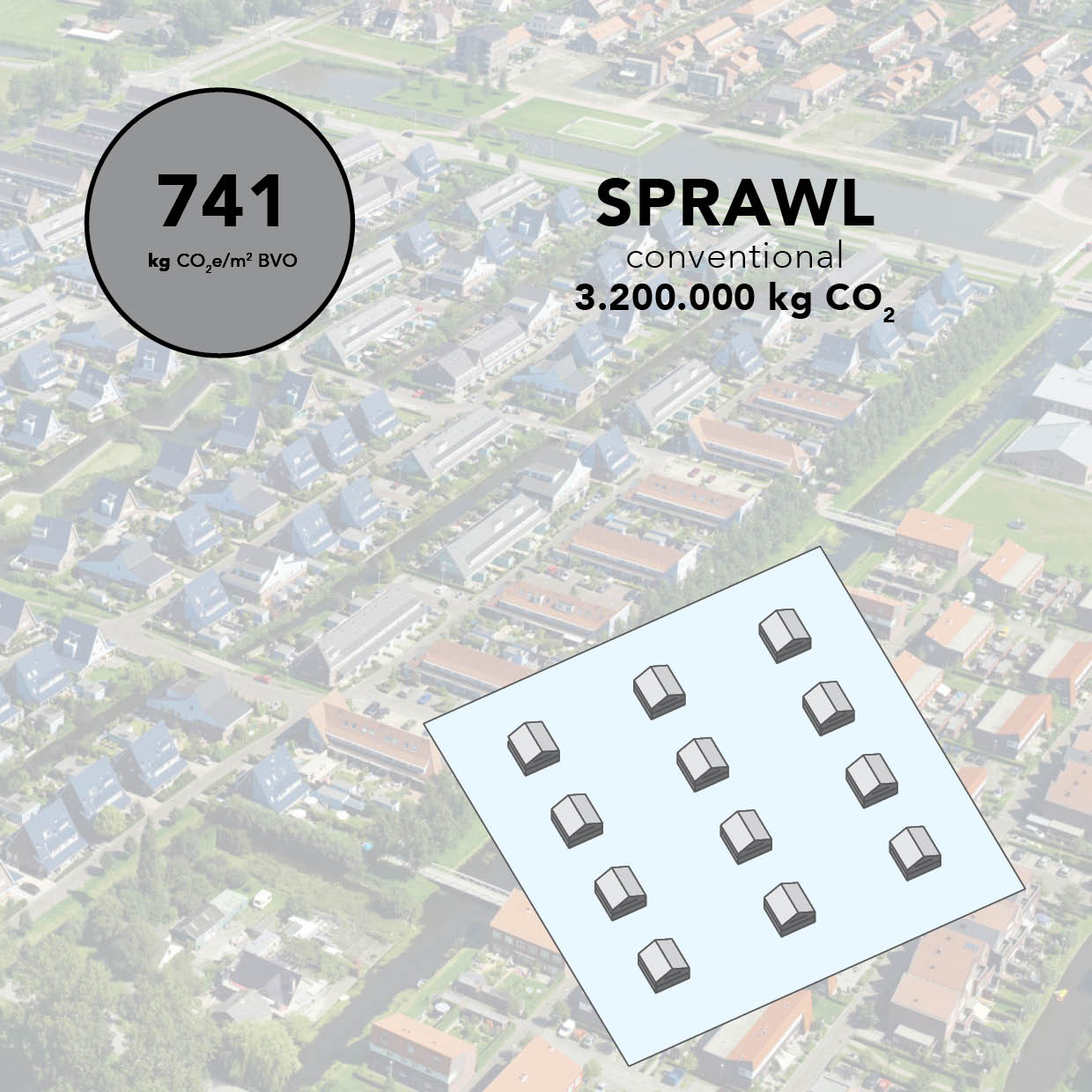
SPRAWL, low density, detached or semi-detached housing as in Dutch suburbs and villages
If built conventionally, this model emits 741 kg CO2 eq / m2 GFA. That is 4 times more than what fits within the Paris Agreement. The reason this model emits so much CO2? Detached and semi-detached houses require a relatively large amount of material per m2, and the production of materials used (concrete, brick, steel, aluminum) emits large amounts of CO2.
Again, we investigated whether this model could also be CO2 negative= climate positive building. And fortunately, we got a more positive result here. By building the houses as biobased as possible, there can be a net storage of CO2 92 kg CO2 eq / m2 GFA.
So good news! We can already build climate positively!
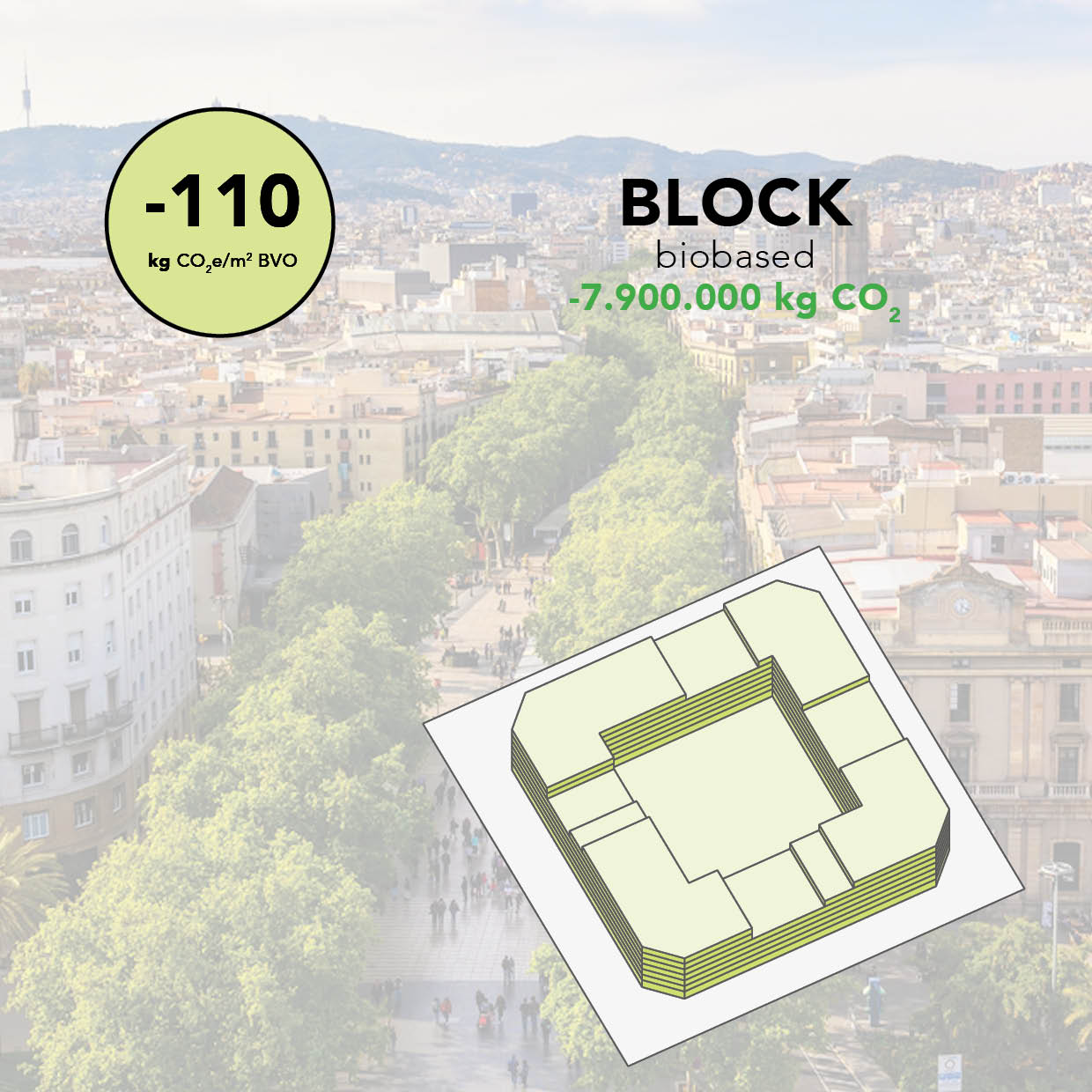
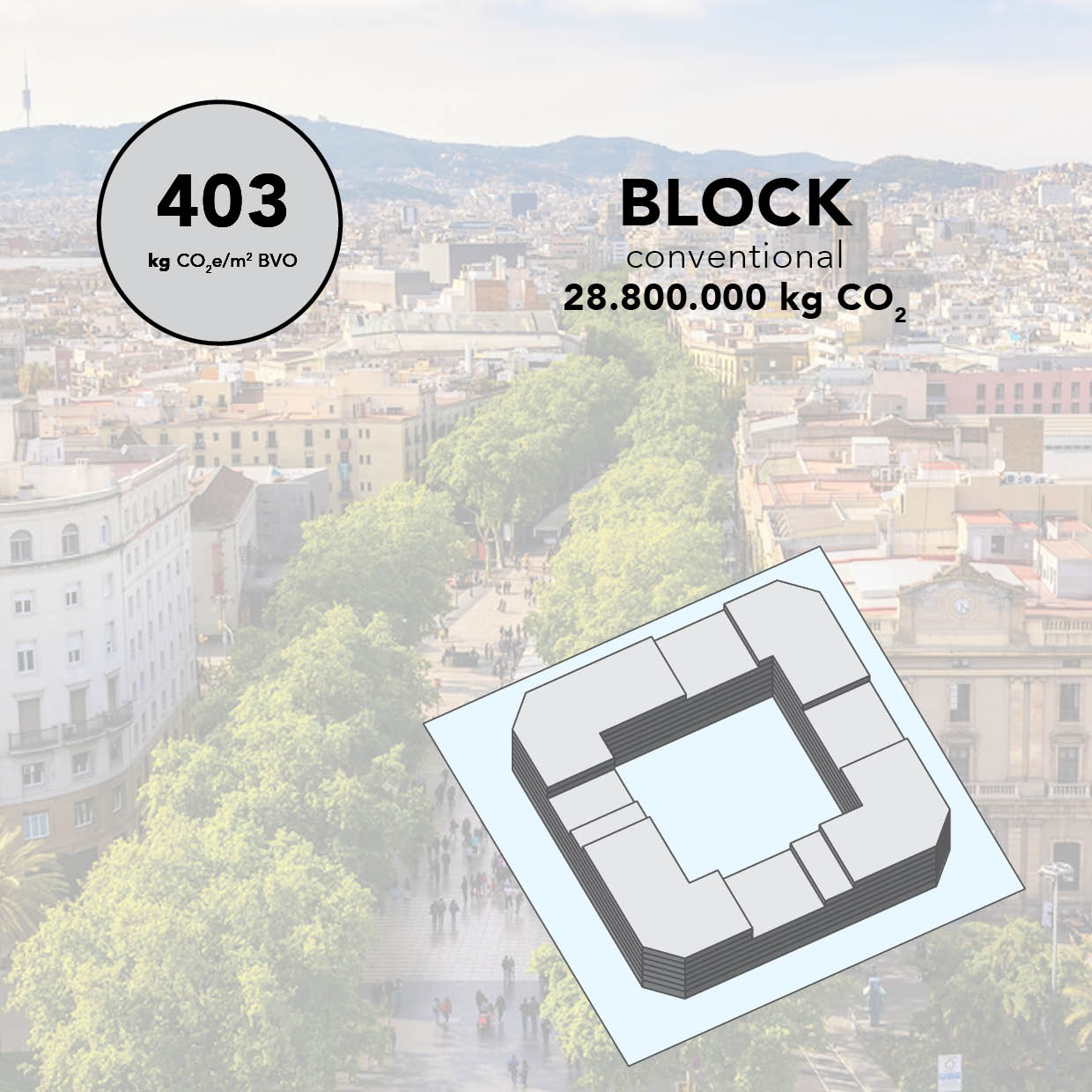
BLOCK, high density in compact urban environment in blocks of 5-8 levels, as in many (of our beloved) European inner cities
If built conventionally this model emits 403 kg CO2 eq / m2 GLA. That exceeds the Paris Agreement twice. This is already much less than the other two models, because these are very compact buildings. They require a relatively low amount of material per m2. Unfortunately because of the materials used (concrete, stone, steel, aluminum) there are still high emissions.
Of course we investigated whether this model can also be built CO2 negative = climate positive. And the answer is YES! Sure, it can be done by building the houses as biobased as possible. In that case there is a net storage of CO2 of 110 kg CO2 eq / m2 GFA.
So again we conclude that we can already build climate positive! Because the density here is quite high, we can also store quite a lot of CO2 per hectare.
NOTE that these calculations does not yet include the CO2 emissions due to required infrastructure. In this model these are expected to be about 4 times lower than detached and semi-detached housing.
